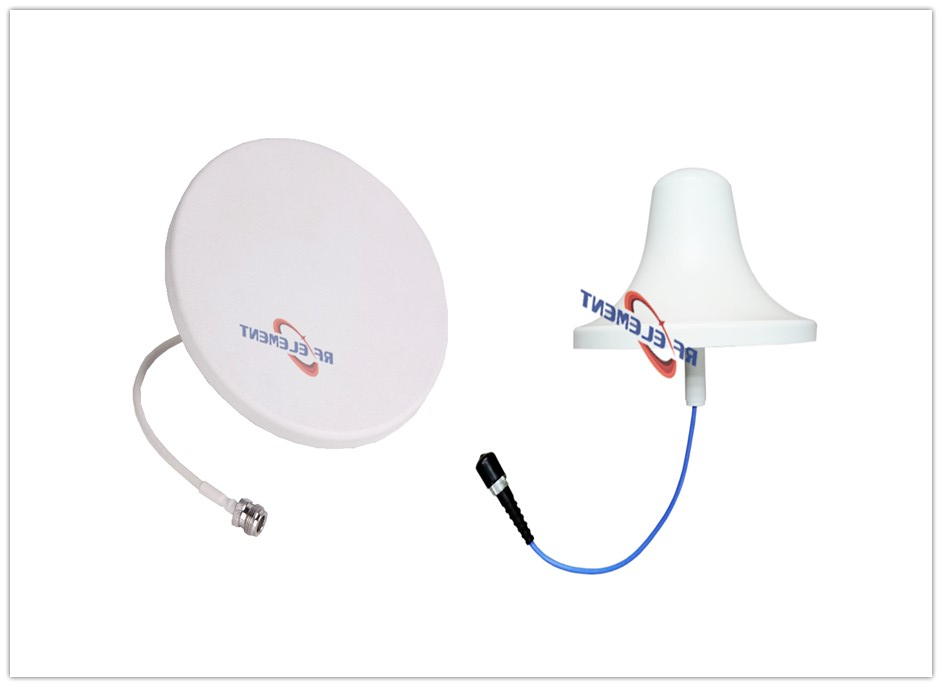5G Ceiling Antenna: Low-Profile vs. Conventional Solutions for Modern Connectivity- Our Technological Leaps

As 5G networks revolutionize industries and consumer applications, 5G ceiling antennas have emerged as critical components for delivering seamless indoor connectivity. These antennas are designed to optimize signal distribution in environments like smart offices, industrial facilities, and residential spaces. RF element, a leader in advanced RF solutions, offers both low-profile 5G ceiling antennas and conventional ceiling antennas, each tailored to specific use cases. This article explores their technical differences, advantages, and ideal applications.
Technical Characteristics
1. Low-Profile 5G Ceiling Antennas
Low-profile antennas prioritize compact design and aesthetic integration without compromising performance:
Slim Form Factor: Typically less than 2 cm in height, blending seamlessly into ceilings for minimal visual disruption.
Wideband Coverage: Supports Sub-6 GHz frequencies (3.5–6 GHz) and mmWave bands (24–40 GHz) for multi-band 5G compatibility.
Low-PIM Technology: Passive Intermodulation (PIM) levels < -150 dBc ensure minimal interference in dense deployments like smart offices or IoT hubs.
Omnidirectional Radiation: 360° coverage ensures uniform signal distribution in open-plan spaces.
2. Conventional 5G Ceiling Antennas
Conventional models emphasize robust performance and scalability:
Higher Gain: 3–8 dBi for extended coverage in large industrial warehouses or stadiums.
Modular Design: Easily upgradable for future network expansions (e.g., adding mmWave modules).
Durability: IP67-rated housing withstands harsh environments like factories or outdoor installations.
Directional Flexibility: Adjustable beam tilt for targeting high-traffic zones, such as conference rooms.
Key Differences
| Feature | Low-Profile 5G Ceiling Antenna | Conventional 5G Ceiling Antenna |
|---|---|---|
| Design | Ultra-slim, discreet | Bulkier, optimized for performance |
| Coverage | 360° omnidirectional | Directional or sectorized focus |
| Installation | Easy, minimal structural modification | Requires professional mounting |
| Ideal Environments | Offices, retail, smart homes | Factories, stadiums, large venues |
| Cost | Higher (due to compact engineering) | Lower (standardized components) |
Application Scenarios
1. Low-Profile 5G Ceiling Antennas
a. Smart Offices and Co-Working Spaces
Seamless Aesthetics: Blends into modern architectural designs while supporting high-density device connectivity.
IoT Integration: Powers real-time collaboration tools, AR/VR meeting platforms, and smart HVAC systems.
b. High-End Retail and Hospitality
Discreet Connectivity: Enhances customer experiences with invisible 5G support for mobile payments, AR product displays, and personalized services.
c. Healthcare Facilities
Reliable Telemedicine: Enables low-latency transmission of medical imaging and remote diagnostics in clinics.
2. Conventional 5G Ceiling Antennas
a. Industrial IoT and Warehouses
Long-Range Coverage: Supports automated guided vehicles (AGVs) and real-time inventory tracking in large spaces.
Rugged Performance: Resists dust, humidity, and temperature extremes in manufacturing plants.
b. Stadiums and Event Venues
High-Capacity Backhaul: Delivers ultra-low latency (<1 ms) for live streaming and augmented reality experiences.
c. Transportation Hubs
Massive Connectivity: Manages thousands of concurrent connections in airports or train stations.
Choosing the Right Antenna
1. Low-Profile Models Are Ideal When:
Aesthetic Integration is critical (e.g., luxury hotels, corporate lobbies).
Space Constraints limit mounting options (e.g., low ceilings in apartments).
2. Conventional Models Are Better Suited For:
High-Performance Demands (e.g., industrial automation, large-scale IoT).
Budget-Conscious Projects requiring scalable, modular designs.
Case Study: Smart Factory Deployment
A European automotive manufacturer deployed RF element’s low-profile 5G ceiling antennas in its R&D center and conventional antennas in its assembly line:
R&D Center: Low-profile antennas enabled AR-assisted design reviews with <5 ms latency.
Assembly Line: Conventional antennas provided reliable connectivity for 100+ AGVs, reducing downtime by 30%.
Future Trends
AI-Driven Beamforming: Both antenna types will leverage machine learning to dynamically optimize signal paths.
Energy Efficiency: Low-profile designs will integrate solar-powered modules for sustainable deployments.
Choosing between low-profile and conventional 5G ceiling antennas depends on balancing aesthetics, performance, and environmental demands. RF element’s solutions cater to diverse needs, from discreet smart home integrations to industrial-grade connectivity, ensuring seamless 5G readiness for the IoT era.
Explore RF element’s Solutions → 5G Ceiling Antenna


